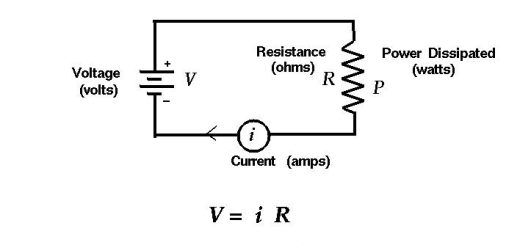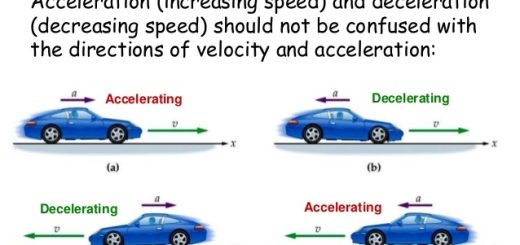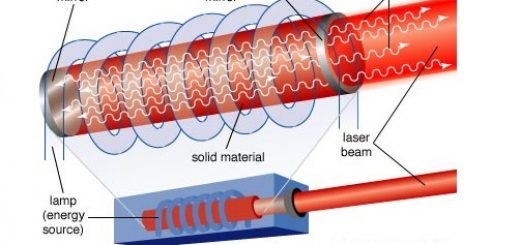Laws of light reflection, Plane mirrors, Spherical mirrors, Concave mirror and Convex mirror
Light reflects when it fails on a reflecting surface such as mirrors or any other smooth shiny surfaces. If you look at a mirror you can see the image of your face in the mirror due to light reflection. If you look at a smooth shiny surface (like a still-water surface), you can see the image of the constructed buildings and trees on this still-water surface.
Light reflection
Light reflection is the phenomenon of the light bouncing off (returning back) in the same medium when it strikes a reflecting surface. To study the reflection of light, we must know some concepts related to it:
- The incident light ray: It is the light ray that falls on the reflecting surface.
- The angle of incidence is the angle between the incident light ray and the normal.
- The normal is the perpendicular line to the reflecting surface on the point of incidence.
- The reflected light ray is the light ray that bounces (returns back) from the reflecting surface.
- The reflection angle is the angle between the reflected light ray & the normal.
When the angle of incidence of a light ray is 60°, so the angle between the incident light ray and the normal is 60°, When the angle between a reflected light ray and the normal is 60°, so the angle of reflection of this light ray is 60°.
Laws of light reflection
The reflection of light is governed by two principal laws:
- First law: The angle of incidence = Angle of reflection.
- Second law: The incident light ray, the reflected light ray, and the normal line to the reflecting surface at the point of incidence all lie in one plane perpendicular to the reflecting surface.
The incident light ray which falls perpendicular to a reflecting surface, reflects on itself because the angle of incidence equals the angle of reflection equals zero. When the angle of incidence of a light ray equals zero, so, this incident light ray falls perpendicular on a reflecting surface.
Mirrors
Mirrors are reflecting surfaces for light, Mirrors are divided into two main types:
The plane mirrors
The plane mirror is a piece of plane glass, painted from behind with a thin layer of silver metal to give the glass a bright surface that reflects the incident light rays that fall on it.
The properties of the image formed on the plane mirror.
- The image is upright (erect).
- The image is equal to the object in size.
- The image is laterally inverted (reversed).
- The image is virtual.
- The distance between the object & the mirror equals the distance between the image and the mirror.
- The straight line joining the object to its image is perpendicular to the surface of the mirror.
The virtual image is the image that cannot be received on a screen, The word AMBULANCE is written in a laterally inverted way on the ambulance car because the mirrors of the cars in front of the ambulance car, form a laterally inverted image for this word, and thus it appears laterally corrected to the drivers.
When you look at a plane mirror, you find that you hold the pen by the left which is inverse to the real position. Most people can’t write correctly, while they are seeing their writing through a plane mirror because the images formed by the plane mirror are laterally inverted (reversed).
Problems
• If a person stands at a distance of 2 m from a plane mirror. What is the distance between the person and his image?
Solution:
The distance between the person and image = 2 + 2 = 4 m
• Ramy stands at a distance of 4 m from a plane mirror, and an image is formed for him.
- What is the distance between the image of Ramy and the mirror?
- Calculate the distance between Ramy and his image.
- If Ramy moves half a metre towards the mirror, calculate the distance between Ramy and his image.
Solution:
- The distance between the image of Ramy and the mirror = 4 m.
- The distance between Ramy and his image = 4 + 4 = 8 m.
- Ramy moves 0.5 m towards the mirror. The distance between Ramy and the mirror = 4 – 05 = 3.5 m. The distance between Ramy and his image = 3.5 + 3.5 = 7m.
Spherical mirrors
The spherical mirror is a mirror, whose reflecting surface is a part of a hollow sphere.
Types of spherical mirrors
- Concave mirror (converging mirror).
- Convex mirror (diverging mirror).
Concave mirror (converging mirror)
The concave mirror is a mirror, whose reflecting (shining) surface is a part of the inner surface of the sphere, The concave mirror is called a converging mirror as it converges (collects) the parallel light rays that fall on its surface.
Convex mirror (diverging mirror)
A convex mirror is a mirror, whose reflecting (shining) surface is a part of the outer surface of the sphere, The convex mirror is called a “diverging mirror” as it diverges (disperses) the parallel light rays that fall on its surface.
The stainless-steel spoon is considered an example of a spherical mirror as its inner surface acts as a concave mirror, and its outer surface acts as a convex mirror.
Concepts related to the spherical mirrors
- Centre of mirror curvature (C): It is the centre of the sphere that the mirror is considered as a part of it. It lies in front of the reflecting surface in the concave mirror, It lies behind the reflecting surface in the convex mirror, Spherical mirrors have only one centre of curvature.
- Pole of the mirror (P): It is the point that lies in the middle of the reflecting surface of the mirror.
- The radius of mirror curvature (r): It is the radius of the sphere that the mirror is a part of it or it is the distance between the centre of mirror curvature (C) & any point on its reflecting surface.
- The principal axis of the mirror (CP): It is the straight line that passes by the pole of the mirror (P) and its centre of (C). There is only one principal axis.
- The secondary axis of the mirror is any straight line that passes by the centre of the mirror and any point on its reflecting surface except the pole of the mirror. There are an uncountable number of secondary axes.
- Focus of the mirror (F): It is the point of collection of the reflected light rays (in the concave mirror) or their extensions (in the convex mirror), It is produced when a parallel beam of rays is incident parallel to the principal axis of a spherical mirror, The concave mirror has a real focus and it lies in front of the reflecting surface, The convex mirror has a virtual focus and it lies behind the reflecting surface, Spherical mirrors have only one focus.
- Focal length of the mirror (f): It is the distance between the focus of the mirror (F) and its pole (P), The focus lies at the mid-distance between the pole and the centre of curvature. f = ½ r.
The spherical mirror has only one principal axis and uncountable number of secondary axes, It has one principal axis, because it has one centre of curvature and one pole, while it has uncountable number of secondary axes because any straight line passes by its centre of curvature and any point on its surface except the pole is considered as a secondary axis.
The relations between the radius, diameter of mirror curvature, and its focal length
Radius of mirror curvature (r) = 2 x Focal length (f)
Radius of curvature (r) = ½ diameter
Focal length= ½ radius
Focal length (f) = ¼ diameter
When the focal length of a spherical mirror is 10 cm, so, the distance between the focus of the mirror (F) and its pole (P) is 10 cm. When the radius of curvature of a spherical mirror is 20 cm, so, the distance between the centre of mirror curvature (C) and any point on its surface is 20 cm.
• Calculate the radius of curvature of a concave mirror, whose focal length is 8 cm.
Solution
Focal length (f) = 8 cm.
Radius of mirror curvature (r) = 2 x Focal length (f) = 2x 8= 16 cm.
The focal length of a spherical mirror can be determined by knowing its radius of curvature because the focal length (f)= ½ x radius of curvature (r).
You can subscribe to Science Online on YouTube from this link: Science Online
Uses of the concave mirror and the convex mirror in our daily life
Physical Quantities, Scalars, Vectors, Distance, Displacement, Speed & Velocity
Acceleration types, units, importance & Graphic representation of moving in a straight line
Motion in one direction, Types of Speed, Average Speed & Relative Speed
Spherical mirror use, Properties of Images formed by Concave mirror & Convex mirror
Lenses use, types, Convex lens, Concave lens, Vision defects, Contact lenses & Cataract













